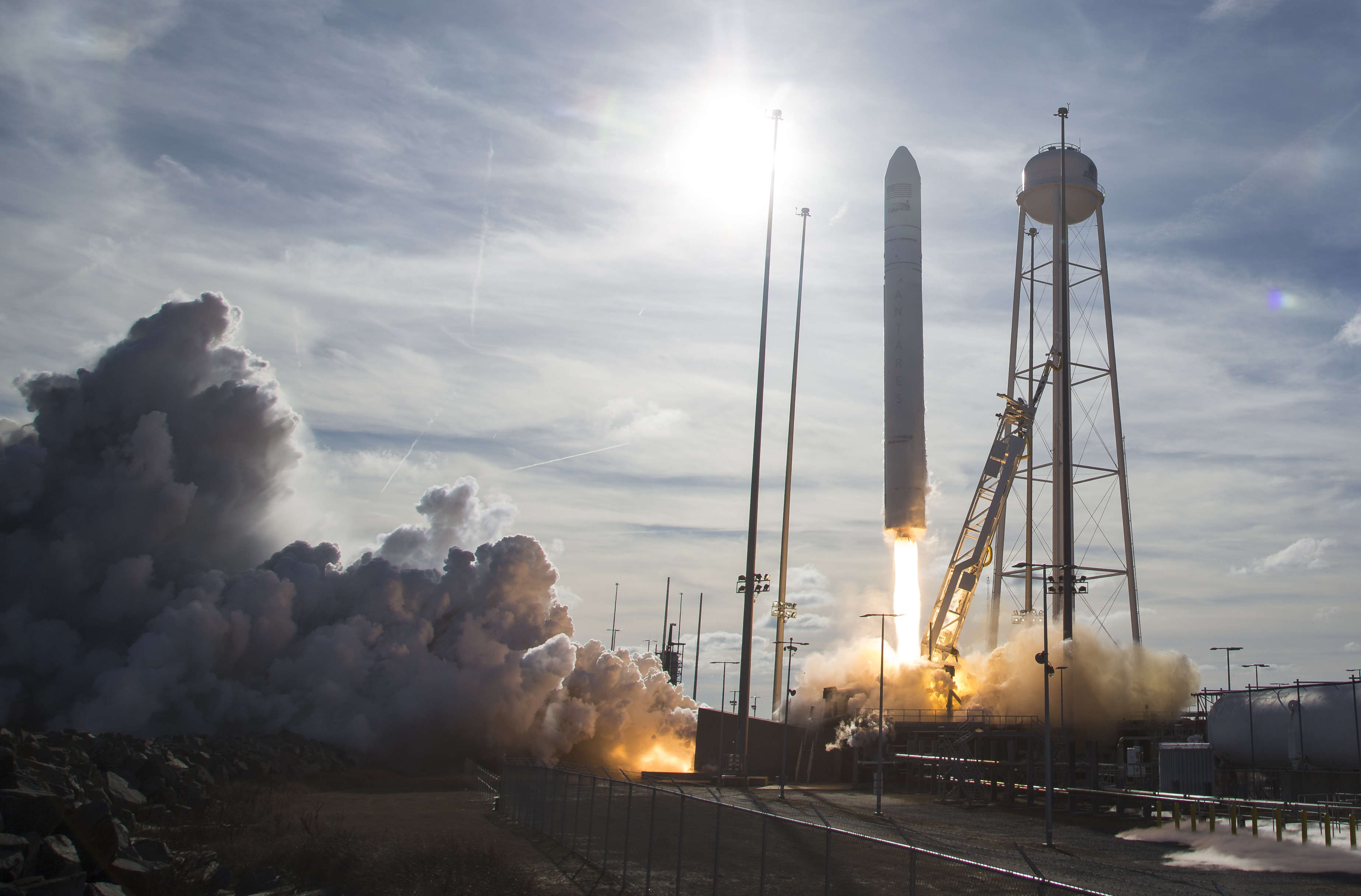Create a free profile to get unlimited access to exclusive videos, sweepstakes, and more!
Attending NASA's NG-16 Antares rocket launch feels like going to infinity and beyond

You’ve probably seen rocket launches on your screen — TV, computer, smartphone — but the actual experience is that amplified to infinity and beyond.
Wallops Island is one of those remote areas you could pass on a road trip without ever knowing it exists. Located off the Virginia coast, it doesn’t draw nearly as many summer tourists as the beaches of nearby Chincoteague, and even signs with the NASA logo can be easy to miss. Yet it's the home of NASA’s launchpad for multiple ISS resupply missions, the last of which occurred in 2019.
So what is it really like to witness a launch? Well, today SYFY WIRE was there to find out.
Imagine that one moment, there is a rocket standing eerily still in the distance. Seconds later, that same rocket is 40,000 feet above your head, en route to the ISS with an entire payload of mind-blowing science experiments. What this mission took to the space station could have come straight out of a sci-fi movie. Among the experiments are a 3D printer that can create entire habitats out of lunar dust; new tech for both cooling spacecraft and getting rid of excess CO2; human muscle and liver cells that will give insight to their reactions in microgravity; and a blob of slime mold that can “think” without a brain.
“We are seeing how a launch such as this, commercial cargo now along with commercial crew to the ISS has been such a successful endeavor,” said NASA administrator Bill Nelson at a pre-launch press conference today, not far from the rocket itself.
Nelson was joined by Associate Administrator and scientist Dr. Thomas Zurbuchen, Associate Administrator and former astronaut Bob Cabana, and Acting Director for the International Space Station Robyn Gatens. Zurbuchen has participated in almost countless studies and takes a multidisciplinary approach to NASA’s scientific investigations. As a physicist, he is especially looking forward to the Flow Boiling and Condensation Experiment (FBCE). This experiment pushes fluid physics with a cooling system that saves energy by removing heat from the source and vaporizing it. If you can’t stand the heat, get it out of the spacecraft.
“Science dreams become reality because of this launch here today,” Zurbuchen said.
Liftoff was scheduled for 6:56 p.m. Climbing to the top row of the bleachers that look like they have no business in a vast field of grass, you can hear the countdown from behind. Five minutes. Four minutes. Smoke is escaping the rocket, not from fuel burning but clouds of cryo-propellant, reminiscent of nightclub fog machines, evaporating in the 95-degree heat. Rocket fuel actually spends most of its life in temperatures below freezing. The 2019 launch that sent the first batch of cookie dough into space (among other experiments) took place during a freezing November morning, when there was not as much noticeable evaporation.
Those last five minutes soon turn into 60 seconds. Eventually the iconic 3…2…1… gives way to a blast of flame and exhaust, as the rocket shoots into a vast expanse of sky, growing ever smaller until it finally vanishes beyond Earth’s atmosphere.
Every Cygnus cargo vehicle that NASA sends into space (which separates from the rocket and continues on to the ISS) is named after a hero in spaceflight. This mission’s namesake, Ellison Onizuka, had a special significance for Cabana. Onizuka was the first Asian American in space, and one of the astronauts on board the Challenger spacecraft that fatally collapsed after only 73 seconds in flight.
“I was a young astronaut candidate back in 1986,” Cabana remembered. “I’d only been at NASA for six months, and I remember when I first met him.”
It was profound for Cabana. Before the tragedy, he recalled Onizuka being the type of person willing to offer everything necessary to make the transition easier, even tools for making adjustments on Cabana's car.
Challenger suffered disintegration at liftoff after the failure of a joint booster. Before Challenger, Onizuka was a U.S. Air Force flight engineer and test pilot, who then made it into space with the Space Shuttle Discovery. The SS Ellison Onizuka is now safely headed to the ISS. The experiments inside could send future astronauts ever farther.
Watching the rocket disappear into a cloud of exhaust, you can only try to fathom what lies beyond. Our species has only gone so far as the Moon, and not yet returned. Gatens believes that technology that will soon be tested on the ISS, like the CO2 scrubber, will land us there again.
“It’s going to be a system that we hope will take us beyond low-earth orbit to missions to the Moon and eventually Mars,” she said.
As daylight fades to twilight, a sense of wonder lingers.














